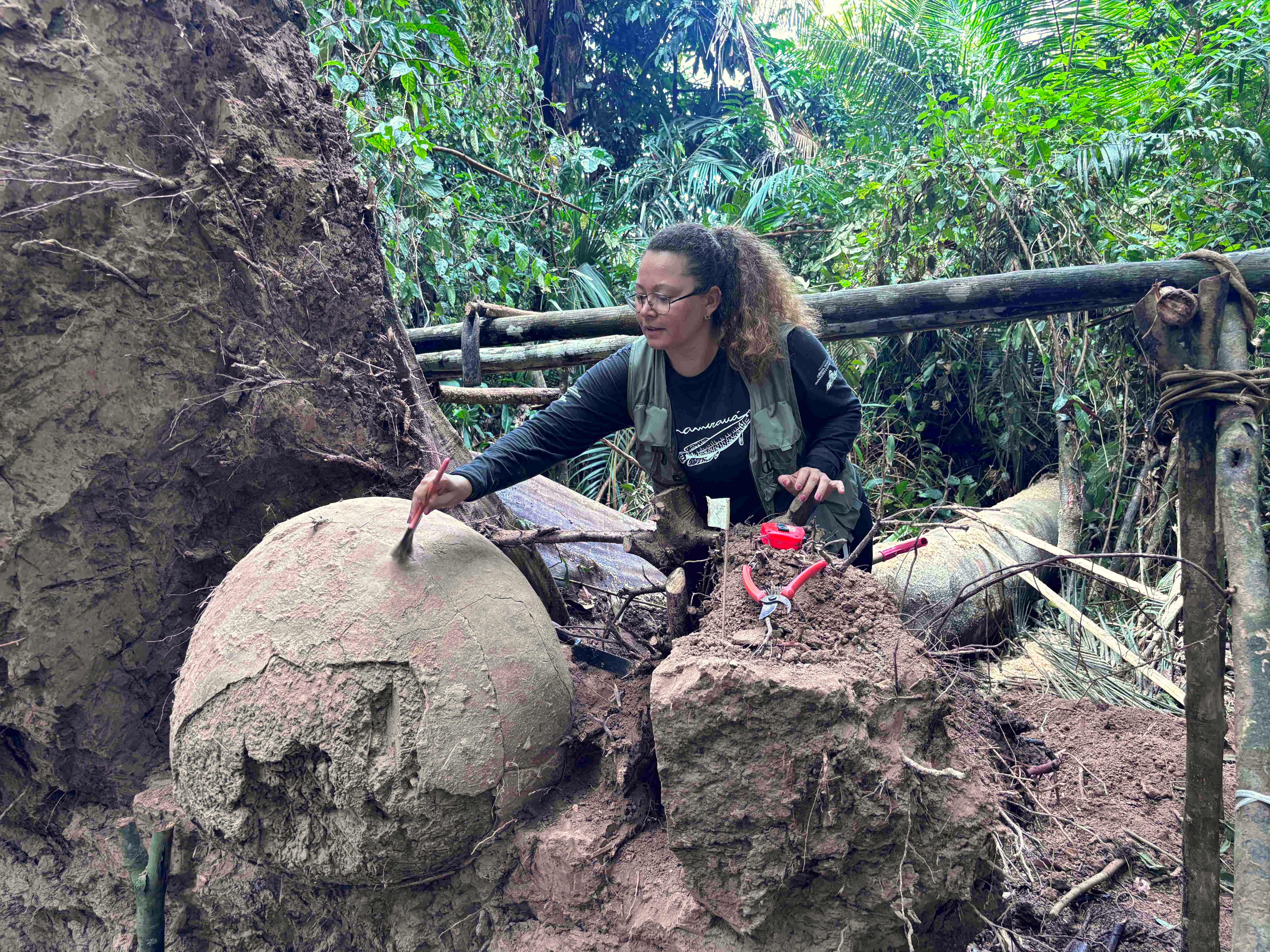When a tree fell in a remote region of the Brazilian Amazon, local villagers noticed something big and very strange lurking beneath its exposed roots. A team of archaeologists arrived shortly afterwards and revealed that the buried objects were in fact ancient funerary urns containing pre-Hispanic human and animal skeletons.
A total of seven urns were found, two of which are described as “large”, although it’s currently unclear which ancient Amazonian culture they represent or how long ago they were interred. “They are large in volume and lack ceramic lids, which could suggest that they were sealed with organic materials that have since decomposed,” explained archaeologist Geórgea Layla Holanda from the Mamirauá Institute.
“They were buried 40 centimeters [16 inches] deep, probably beneath old houses,” Holanda said in a statement.

The urns hint at the presence of a previously unknown ancient cultural tradition.
Image credit: Marcio Amaral
Upon opening the urns, the researchers discovered human bones as well as the remains of fish and turtles, all of which may relate to funerary customs and rituals as well as dietary practices. Initial analysis also revealed that the vessels were made using a range of ceramic techniques, hinting at a long-lost multicultural society that has until now gone unnoticed in the archaeological record.
For instance, the researchers were surprised to discover the use of a green clay that has previously been identified at a small number of other sites within the forested Médio Solimões region. Despite this, it’s still unclear if the urns are directly related to any known pre-Columbian ceramic tradition, such as the so-called Amazonian Polychrome.
Located in the municipality of Fonte Boa, the relics were discovered at the Cochila Lake archaeological site, where a series of artificial islands were constructed by native communities centuries – or perhaps millennia – ago. “These artificial islands are raised archaeological structures on high floodplains, with material removed from other areas and mixed with ceramic fragments, intentionally positioned to give support,” said researcher Márcio Amaral.
“It’s a very sophisticated Indigenous engineering technique, which demonstrates significant land management and population density in the past.”
The urns – which were excavated with the help of locals from the village of São Lázaro do Arumandubinha – were transported on river canoes to a laboratory in Tefé, where they are currently undergoing further analysis in the hopes of learning more about the mysterious ancient cultures that once inhabited this corner of the Amazon.
Source Link: Massive Urns Containing Human And Turtle Remains Found Buried In The Amazon